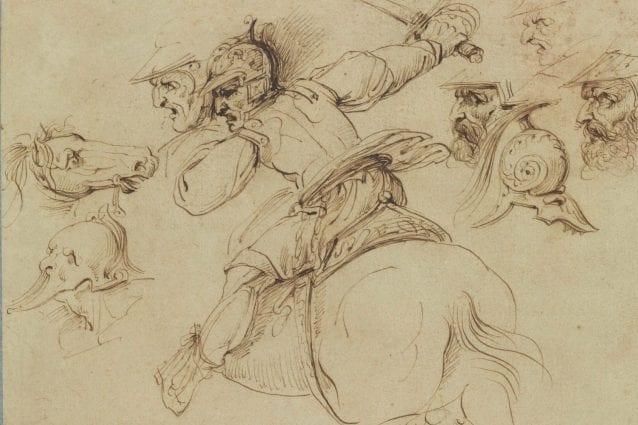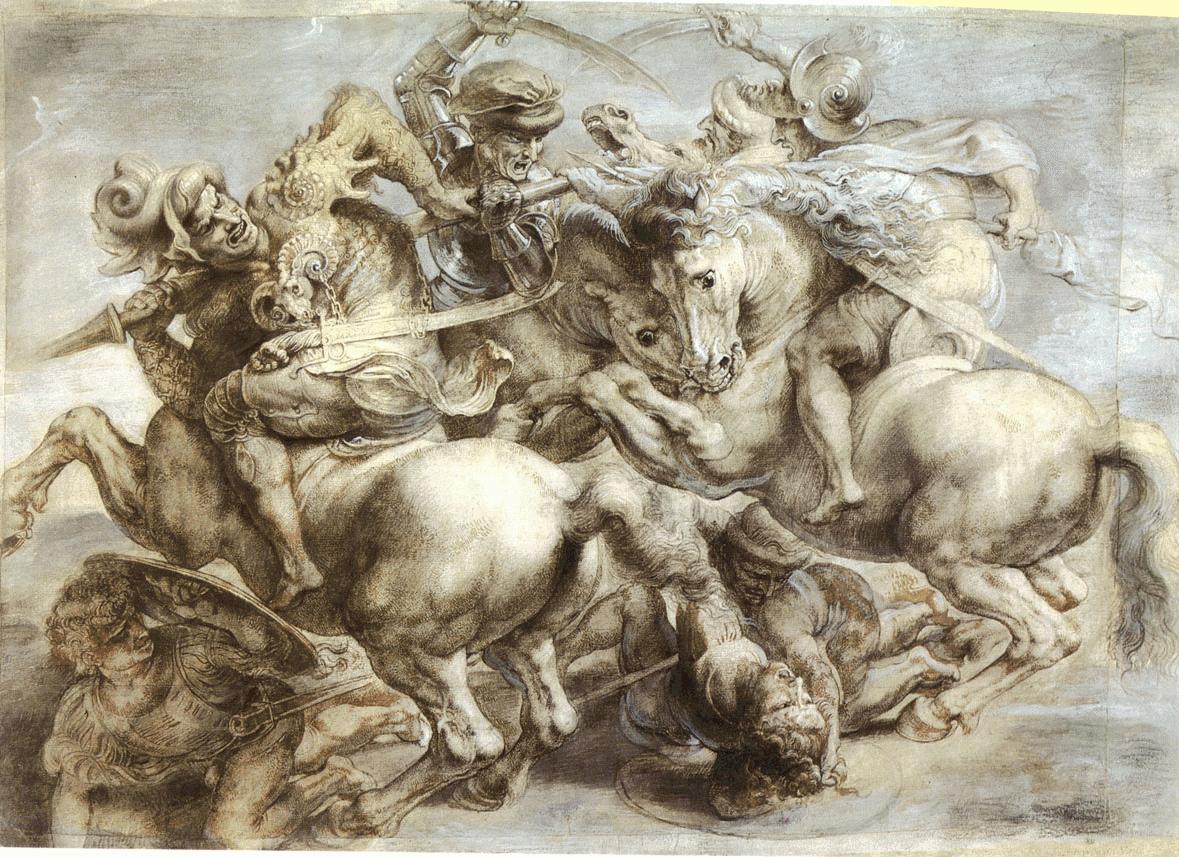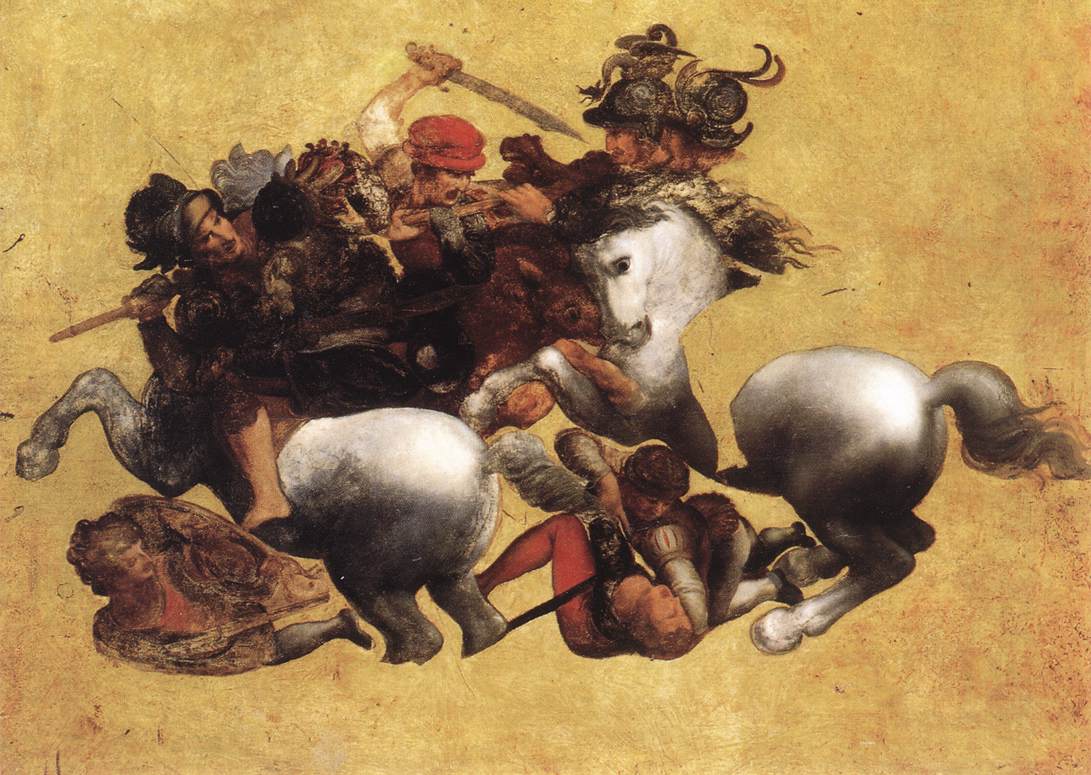
Leonardo, Studio per la Battaglia di Anghiari
The history of art is made up of enigmas and mysteries.
There are works of art of inestimable value and beauty that, due to the vicissitudes of history, have disappeared without a trace. These masterpieces, once admired and celebrated, have become legends, and their absence is as powerful a reminder as the presence of works that have remained with us.
In this post we will explore the mystery of the Battle of Anghiari, Leonardo da Vinci’s lost masterpiece, and try to understand not only its artistic significance, but also the circumstances that led to its disappearance.
The mystery of Leonardo’s Battle of Anghiari

Rubens, copia della Battaglia di Anghiari di Leonardo
Considered one of the most famous and mysterious lost works in history, Leonardo da Vinci’s “The Battle of Anghiari” represents a fascinating chapter in art history.
Commissioned to decorate the Sala del Gran Consiglio in the Palazzo Vecchio in Florence, it was meant to be an exaltation of the Florentine victory in the battle of the same name in 1440.
Leonardo began the work in 1505, but his technical experiments in an attempt to achieve effects of vividness and movement never seen before led to an early deterioration of the work.
The importance of Leonardo’s Battle of Anghiari
Leonardo Vinci’s genius focused on one particular episode, known as “The Struggle for the Standard.” Leonardo’s description of this particular moment in the battle was described by contemporaries as a masterpiece of expression and dynamism, with the horses and soldiers portrayed in a furious struggle, full of tension and movement.
However, due to problems with the painting technique used by Leonardo and perhaps also Leonardo’s departure from Florence, the work was never completed.
Leonardo is not exempt from having made mistakes, and if the work has disappeared today it is perhaps also somewhat his fault. In fact, Leonardo used the encaustic technique, which was ancient but little practiced by both his contemporaries and Leonardo himself.
In the process, the work suffered several damages and Leonardo abandoned the work before it was finished. It is not known with certainty if and how many remains of the Battle of Anghiari remained on the wall of the Palazzo Vecchio.
This certainly contributed to the loss of the work but also to the creation of the halo of mystery that still shrouds the story of this lost masterpiece.
The success and copies of the Battle of Anghiari.
Despite its demise, the influence of “The Battle of Anghiari” survived through various copies made by artists of the time, who had had the opportunity to admire Leonardo’s work before it disappeared.
The best known of these is a drawing attributed to Peter Paul Rubens, preserved in the Louvre, which depicts the fight scene with such vividness and detail as to suggest that Rubens had access to first-hand sources, perhaps even Leonardo’s own preparatory sketches or detailed descriptions of the original work.
Another important copy is one made by an anonymous contemporary of Leonardo. The copy is known as the “Doria Table” and offers further clues as to what the original might have looked like.

Tavola Doria, copia della Battaglia di Anghiari di Leonardo
The mystery of the Battle of Anghiari
Among Leonardo’s works, the Battle of Anghiari is the one that has sparked the most imaginative and compelling hypotheses.
The search for the original of Leonardo da Vinci’s “The Battle of Anghiari” has fascinated art historians and researchers for centuries. There have been various theories. Some argue that the work was destroyed during some renovation work at Palazzo Vecchio, so Leonardo’s masterpiece would be lost forever. Other scholars speculate that Leonardo’s work was hidden by later mural works and one would only have to search to find it.
Over the years, various investigations have tried unsuccessfully to locate the work’s remains, making “The Battle of Anghiari” one of the most enigmatic “absent presences” in art history.
Its legend continues to inspire and stimulate research, in the hope that one day the fate of this lost masterpiece may be revealed.

